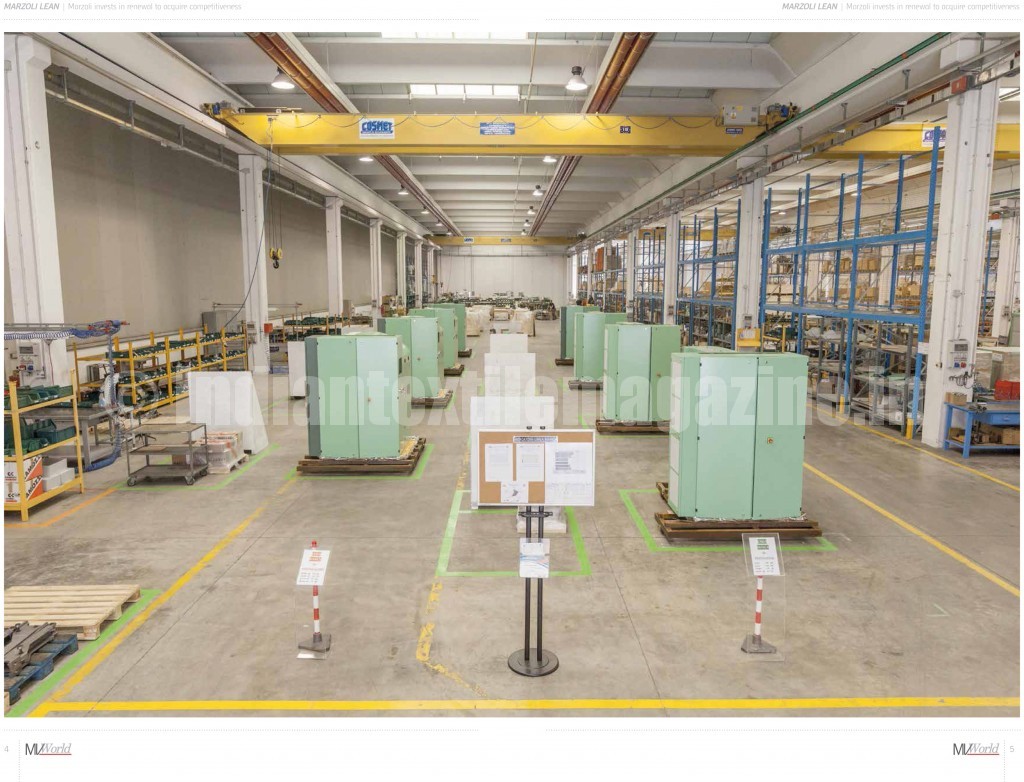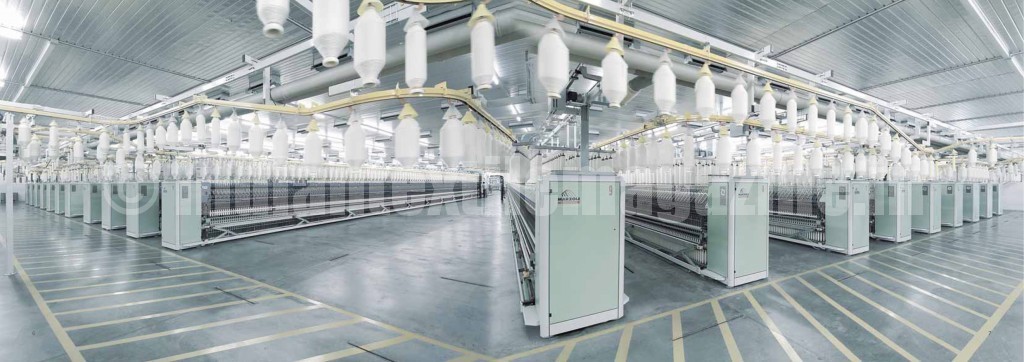Marzoli has always monitored market conditions very carefully and is ever more attentive to the needs of its customers while considering a general decrease in demand and the consequent need for high competitiveness.

In 2011, Marzoli launched the Galileo Line, which continues to prove a great success both at the technological and mechanical level. Today, however, a renewal within the company is necessary that should not only aim at improving the quality of the product, but must also aim at TOTAL QUALITY. This entails the implementation of an effective system of integrated development, maintenance and quality improvement for all departments of the organization so that production and customer support ensure optimal service with full customer satisfaction with the minimum of cost.
This decision is based on a very simple concept: everything that means added value for the customer has a price, whereas that which has no added value (waste and inefficiencies) for the customer only represents a cost.
Marzoli targets ambitious procedural goals such as:
* Order processing Lead Time shorter or no longer than 4 months: The market requires ever-faster turnarounds, which correspond to an increasingly reduced processing time (called Lead Time). This process starts with the confirmation of a client’s order and ends with the shipment of the machinery.
* Reorganization of logistics: Strategic management of supplies, movement and storage of materials, parts and stocks completed (and related information flows) through optimization of the flow of materials and spaces.
* Increasing productivity and improving efficiency: This is done through a direct and indirect organization divided into four product lines (frames, spinning machines, combing, and carding). This organization provides both greater accountability and specialization of human resources.
* Supply chain optimization: Improving all relationships, in order to make the product available along the ideal axis that goes from suppliers to customers.
* Unified approach: Complete involvement of all human resources and their way of thinking. Marzoli must start thinking in a lean way.

Each operator on the one hand and each production partner on the other will work synergistically to increase productivity, and to make processes more efficient by the effectiveness of our actions:
1. Experience shows that by focusing on Lead Time with respect to the manufacturing process, from the customer’s purchase order to the shipment, all the various business sub-processes “adapt” accordingly. For example, the factory is already working to reduce production Lead Time by 50 per cent compared with the standard. That reduction is obtained by rationalizing stocks, using real-time management, and reducing the workflow. The basic methodology used is what the Japanese call 5S – SEIRI: Sorting, SEITON: Set in order, SEISO: Systematic cleaning, SEIKETSU: Standardizing, and SHITSUKE: Sustaining.
2. Marzoli will reach its Lead Time targets also, thanks to a new working process and stocks management layout. In fact, work is on to create four lines – Frames, Spinning Machines, Combing, and Carding (identified by four colors) – which will lead to immediate identification of the material moving through the lines.
In anticipation of the reduction in the movement of materials, the company has invested in the construction of a new 2,500 sq. metres plant adjacent to the existing production site.
This plant, active since July, is where various interconnected departments will concentrate: machinery dispatch to the customer, reception, testing-acceptance, and line warehouses daily resupplied by virtual call via the supplier’s digital platform.
3. Change has always been considered very difficult to sustain, if not by strengthening the organization, but also using new human resources to drive this transformation.
In traditional businesses, at some management levels, we can still find multi-functional and centralized resources. The lean environment emphasizes specialized management by product line.
4. Marzoli, however, does not stop at Lean Production, but adds to this implementation the reduction of component management aiming at industrialization of the product.
This standardization process results in streamlining the supply chain with increased collaboration with fewer selected suppliers who become working partners. In particular, the latter no longer offer individual machine parts but complete product line kits, thus serving as chief suppliers. In this way, the required quality is guaranteed by the greater expertise developed by the supplier within the scope of this close relationship.
Finally, the exchange of data with the Supply Chain will be made even more interactive, thanks to the new interface platform that will be activated by Marzoli and its partners, for faster kits management and constant control which will reflect on the processing of the orders.
This platform will make use of a constantly visible indicator, termed vendor rating, which will monitor both delivery punctuality and quality requirements.
After having indicated the objectives and the approach that the company has set itself, we turn to emphasizing the results obtained in the first four months of 2013.
Since January 2013, Marzoli has reorganized the first production line (Roving frames line) according to the Lean Production framework. This task was prepared and planned throughout the first quarter, and at the right moment all of the necessary personnel got involved in the Lean transformation of the line within the space of a week. The approach used was the Rapid Improvement Week (Blitz Kaizen) which in just a few days made it possible to reach exceptional performance results.
The Kaizen Week is the cornerstone by which the Toyota Production System (TPS) is introduced into the company. Implementing a Lean conversion may seem to be a very complex undertaking, but on the contrary, the transformation process happens easily in only five days.
Kaizen Weeks enable implementation of relevant improvements within a specific productive area. There is nothing more effective than experiencing the impact of this approach in practice and seeing the results for oneself.
Experience shows that there can be no improvement without sustainability. To maintain the results obtained during the first quarter, the roving frames line undergoes constant control, thanks to performance indicators such as Lead Time, Productivity, Observance of the 5S, and Quality Cards, also known as Suggestions for Improvement provided by employees.
These latter group activities lead to a series of other results such as voluntarism, i.e., the voluntary participation of people who want to be an integral part of this transformation, and growth of the staff members who are ready to “study” and learn to improve their skills.
In conclusion, the company plans to complete the “Lean transformation” of its production lines this year itself. Reorganization will continue in June with the Spinning Machines Line, then in September with the Combing Line, followed with the Carding Line by the end of 2013.